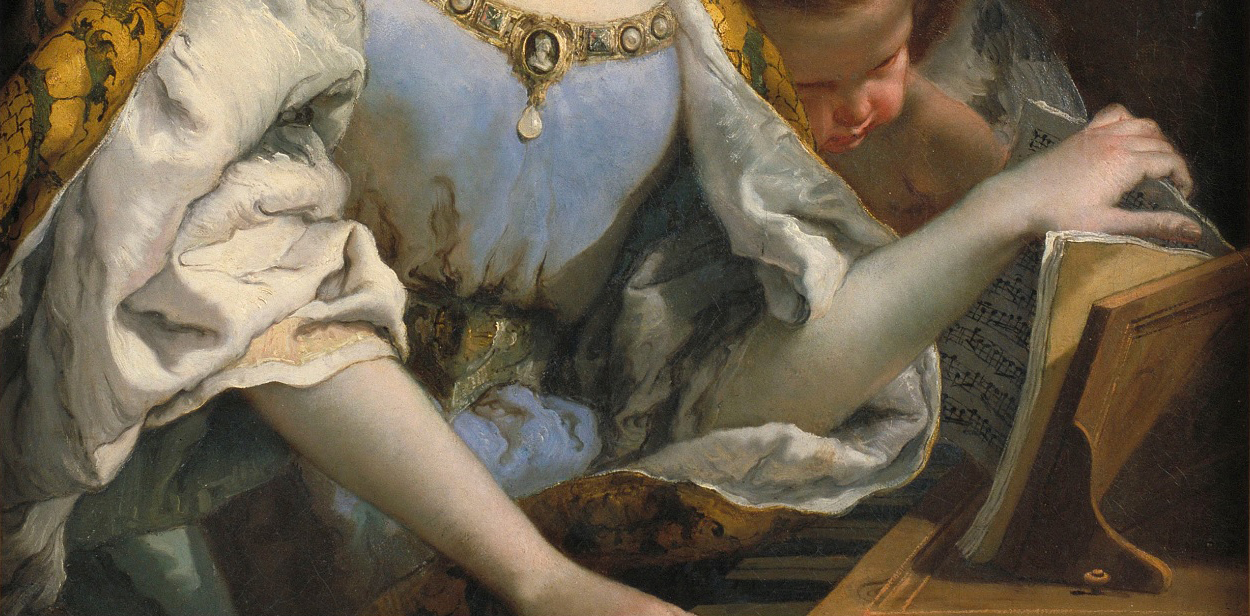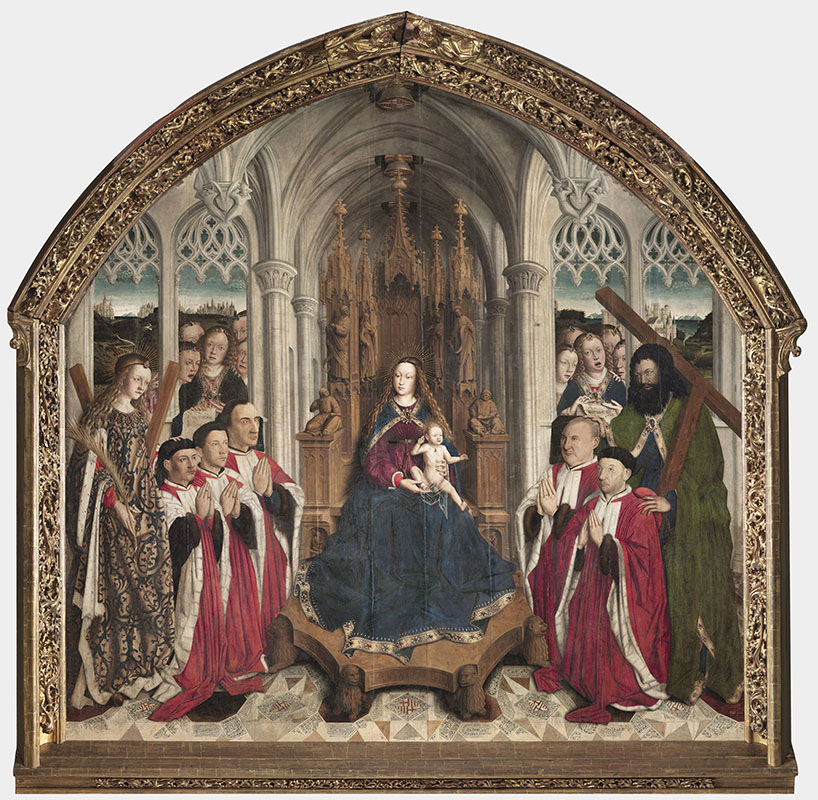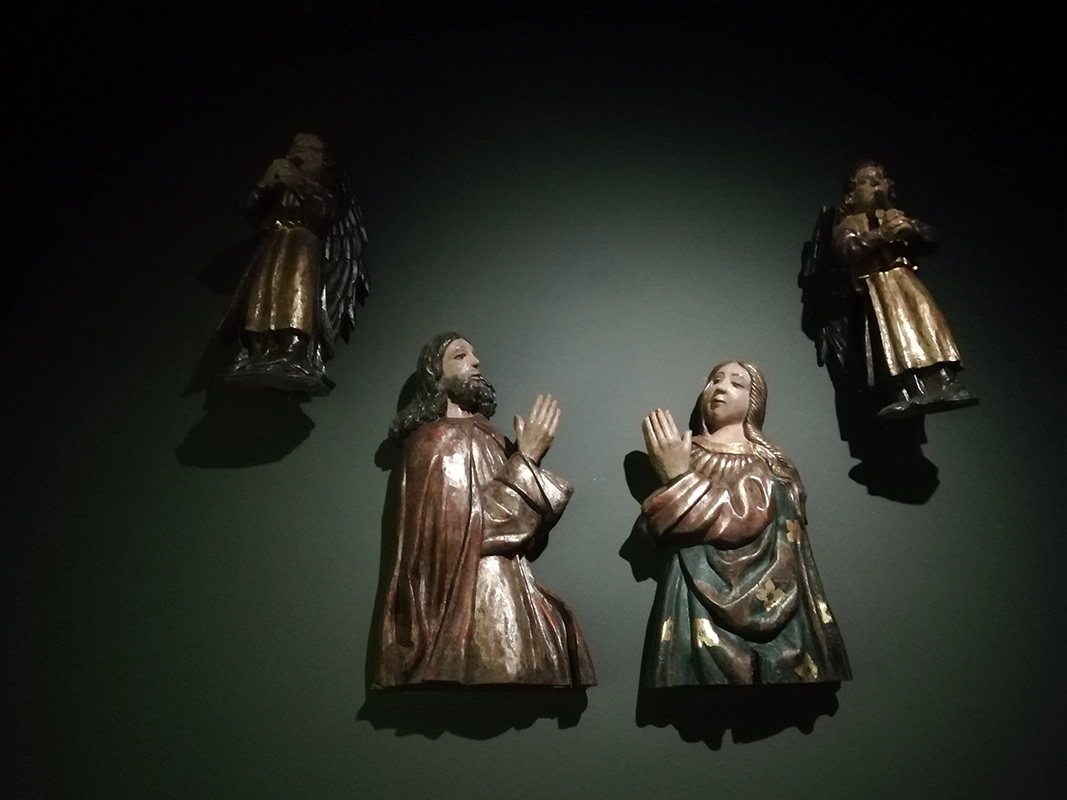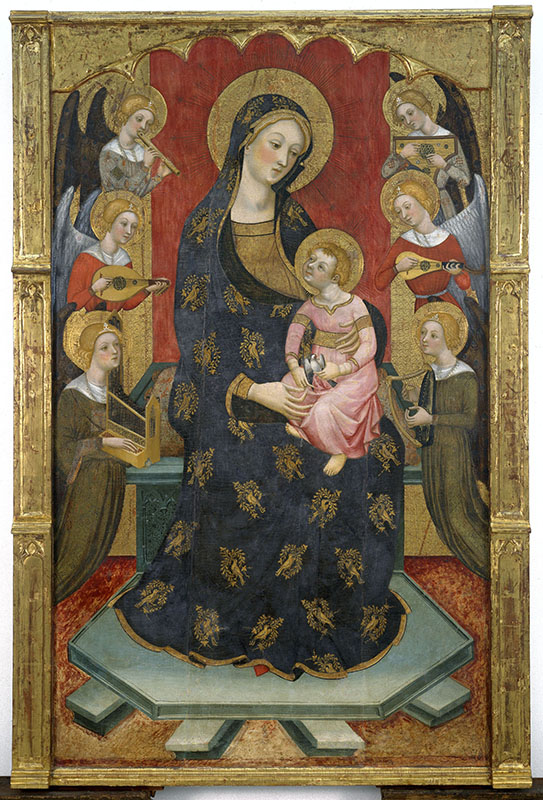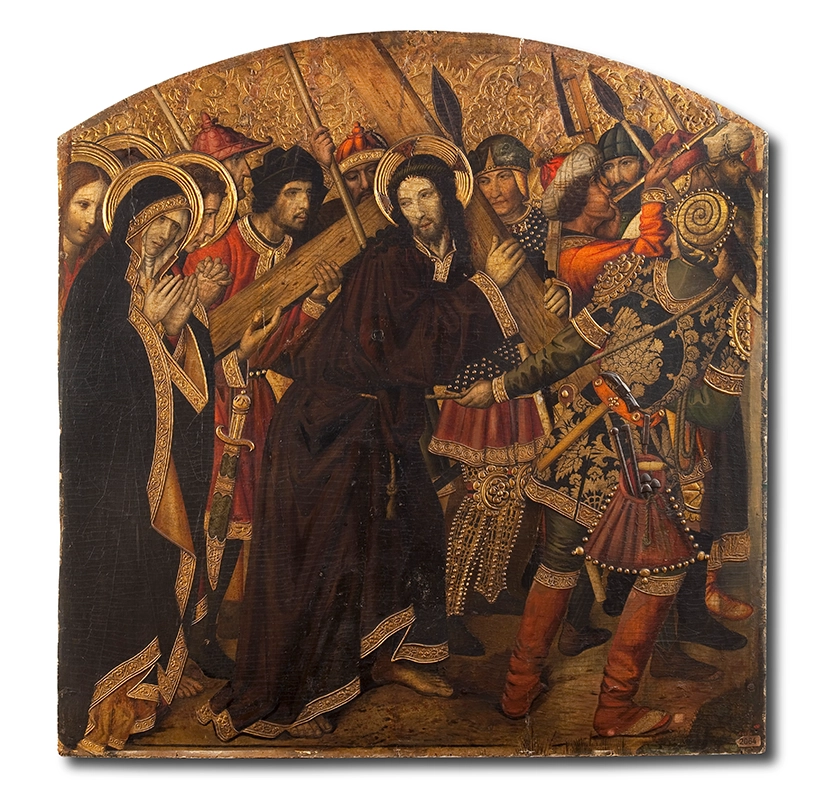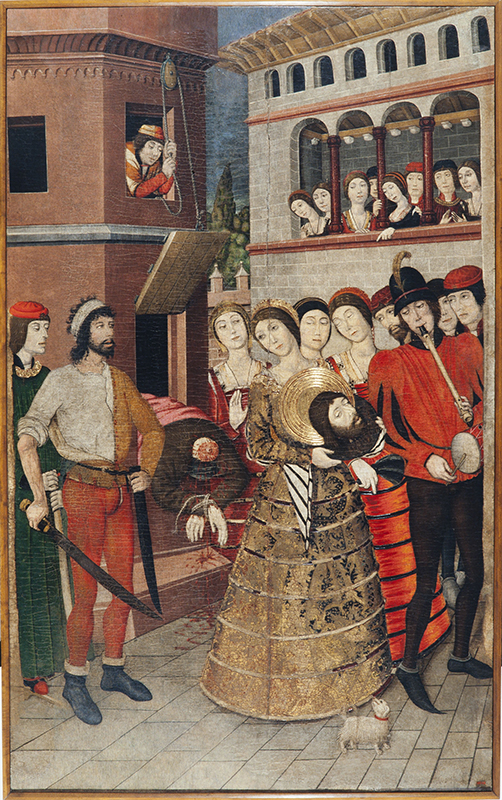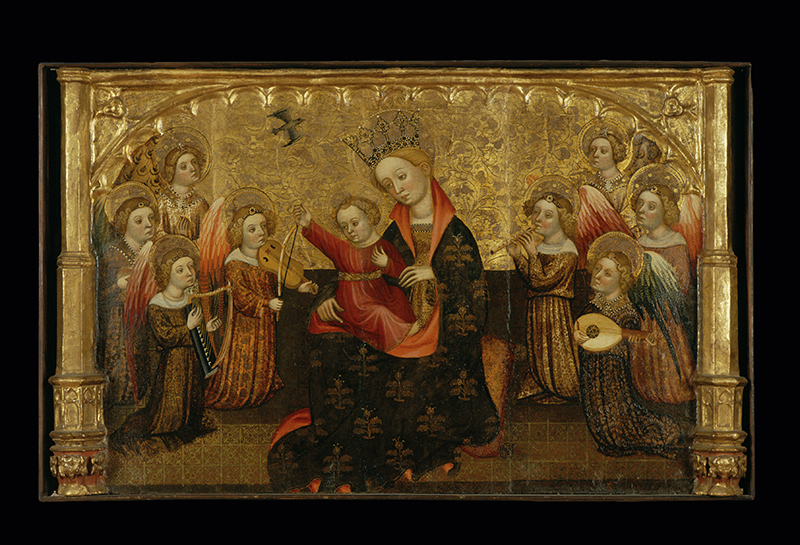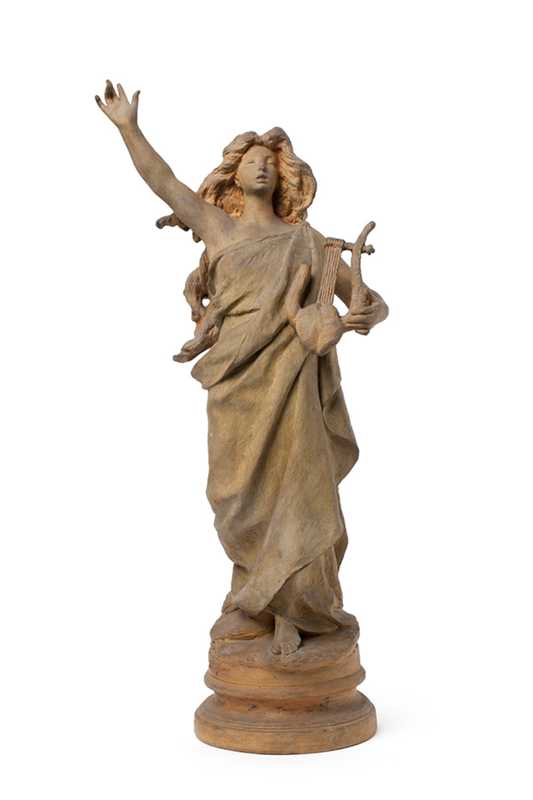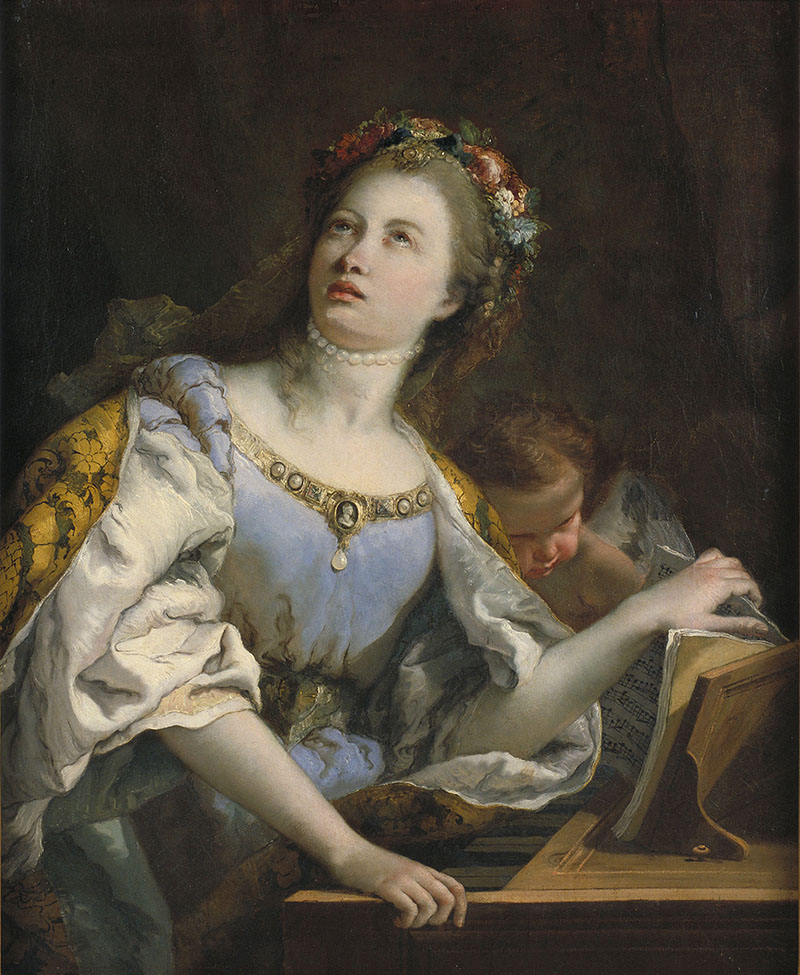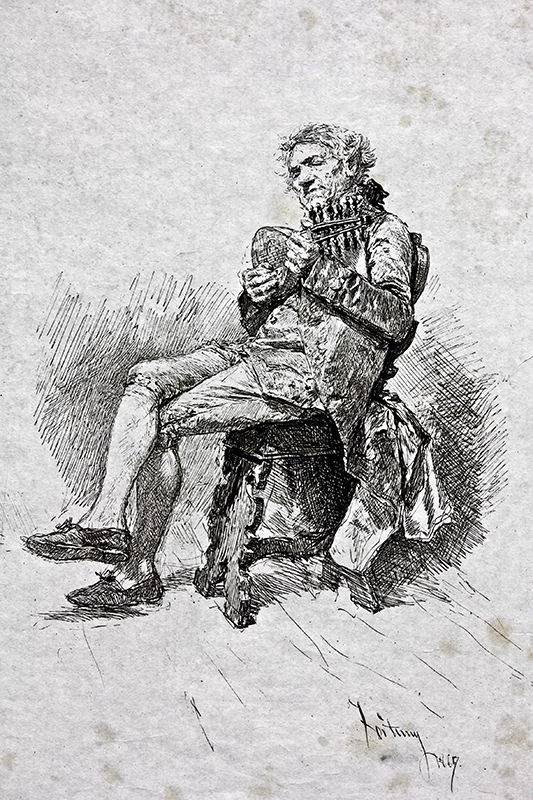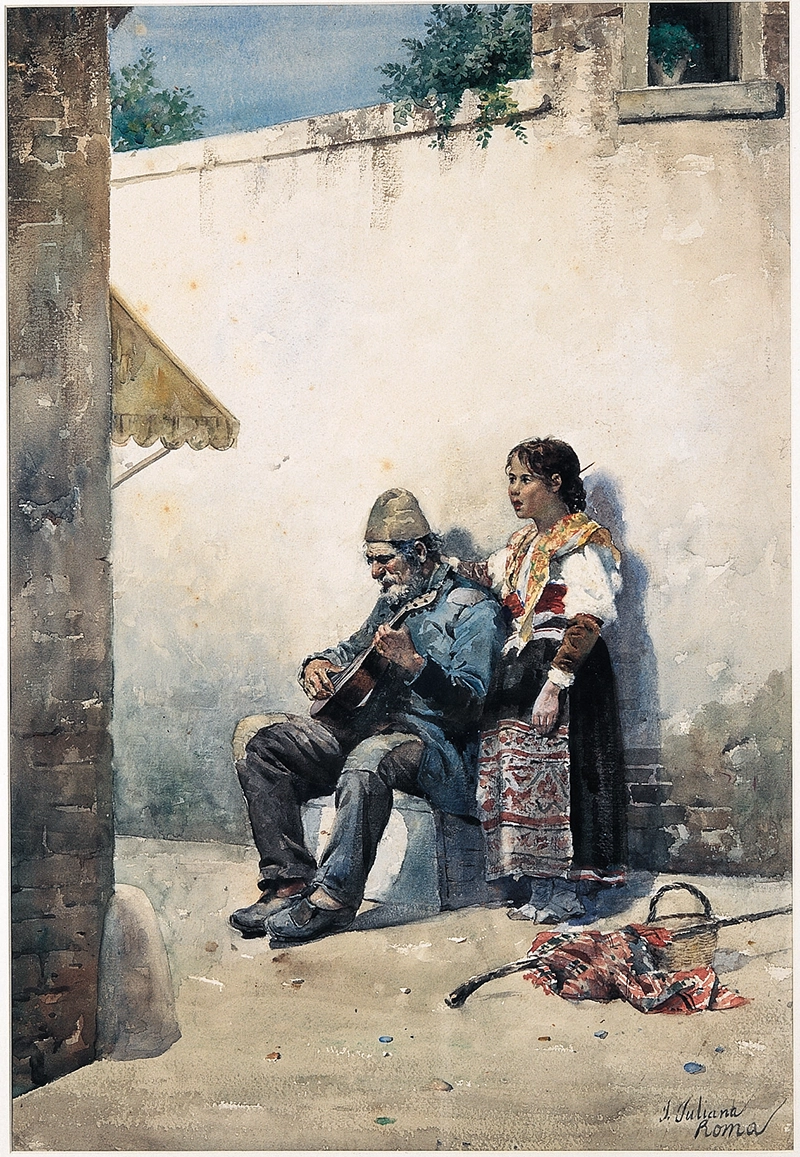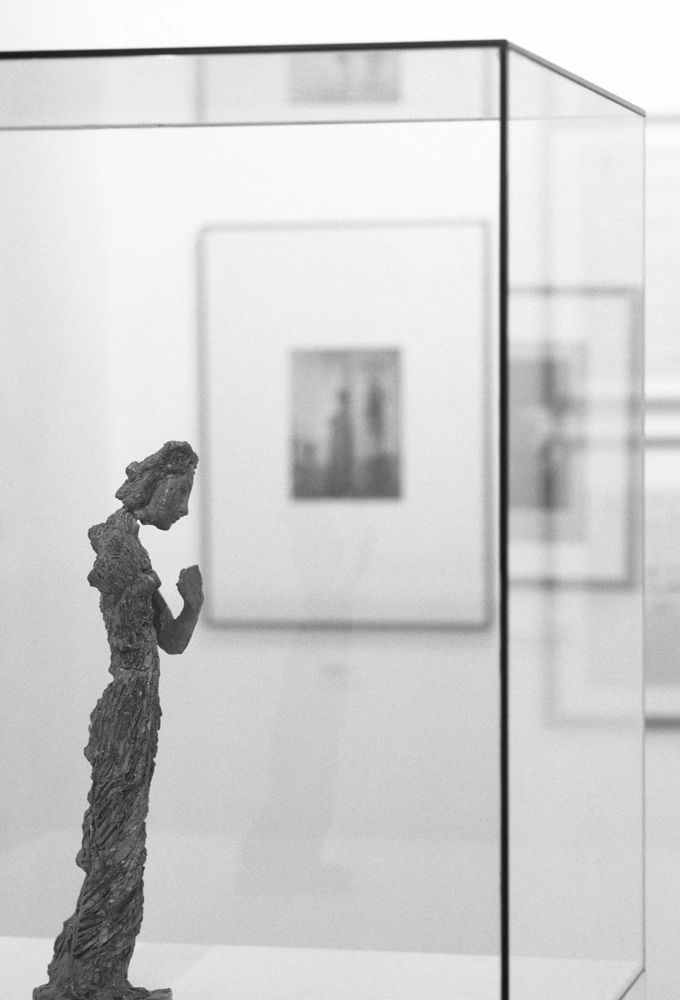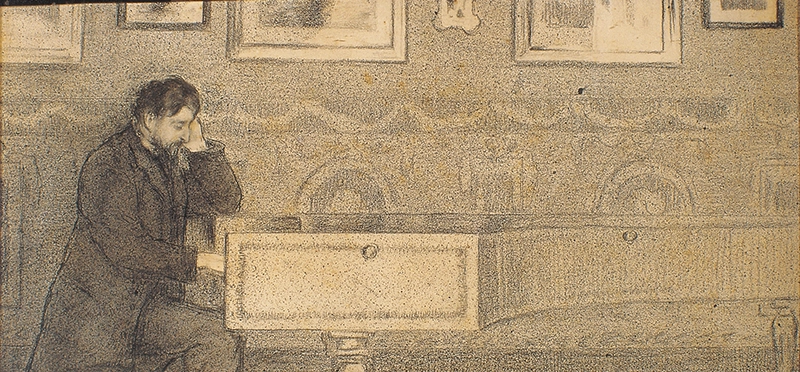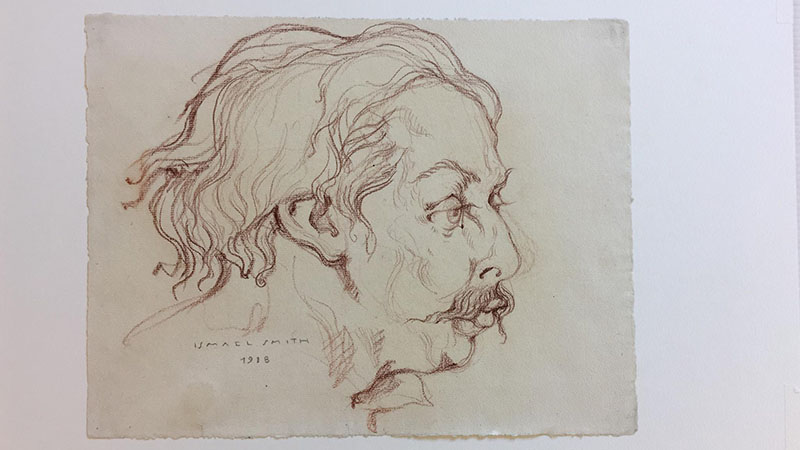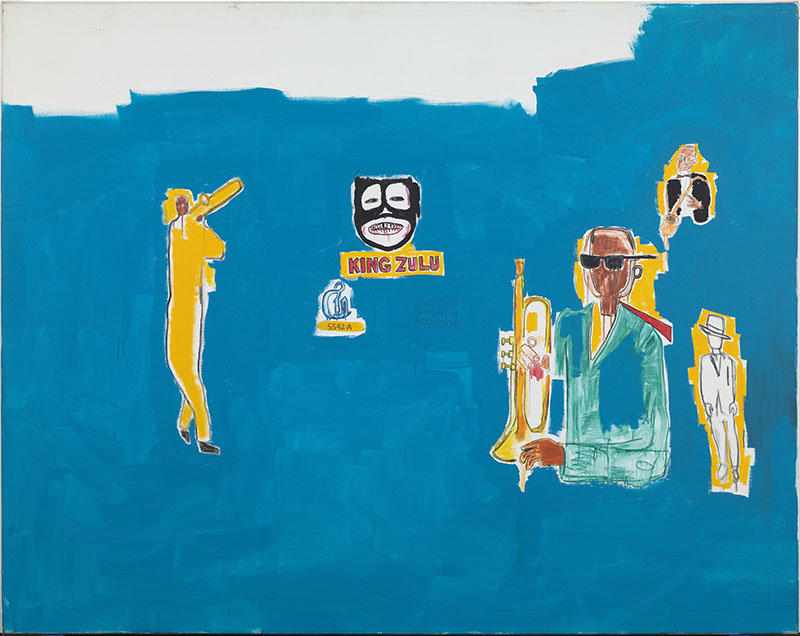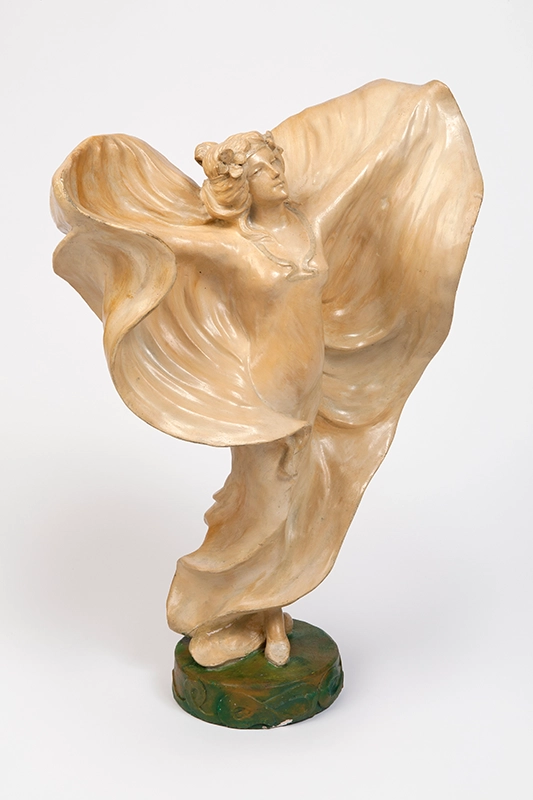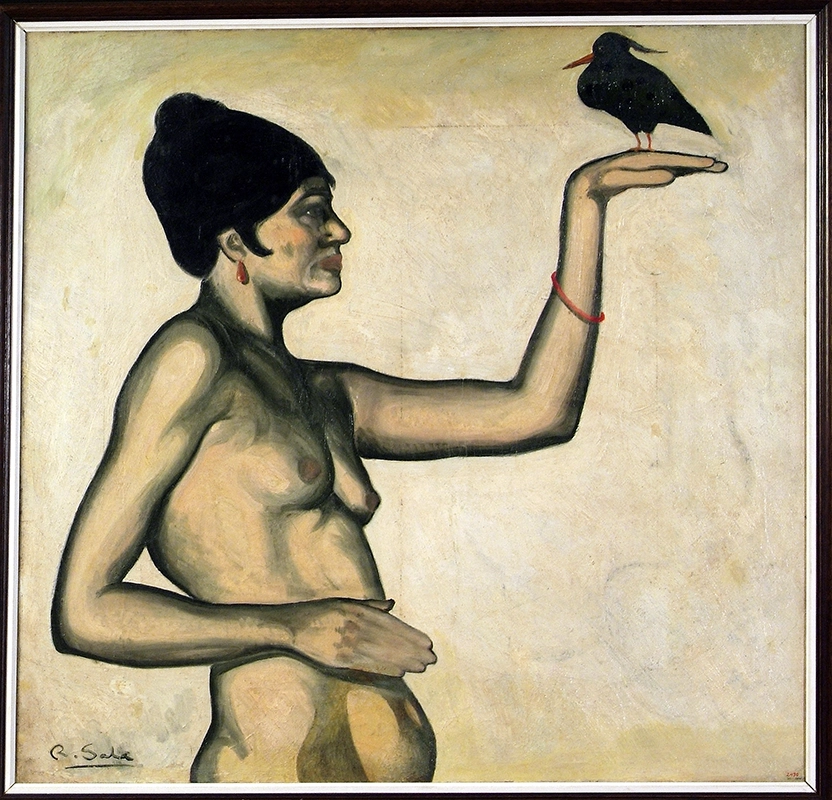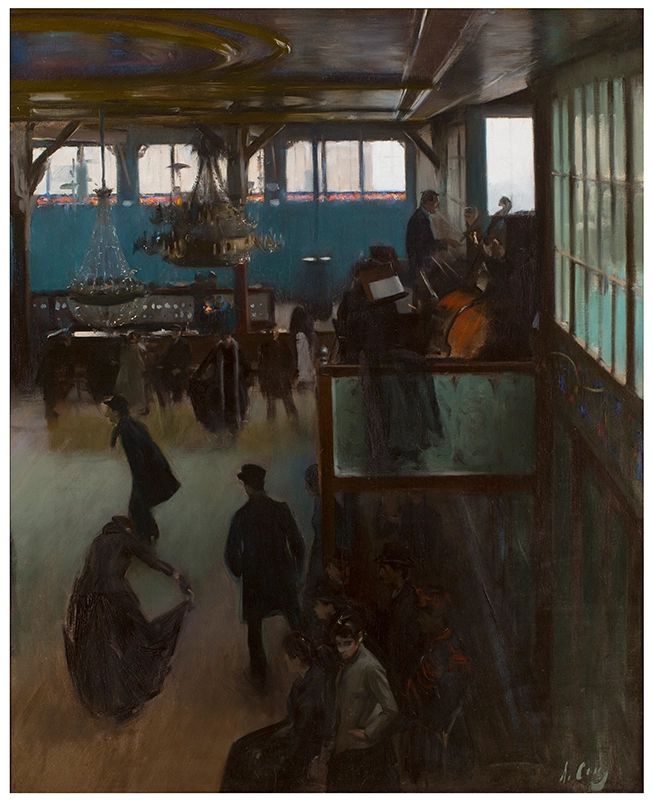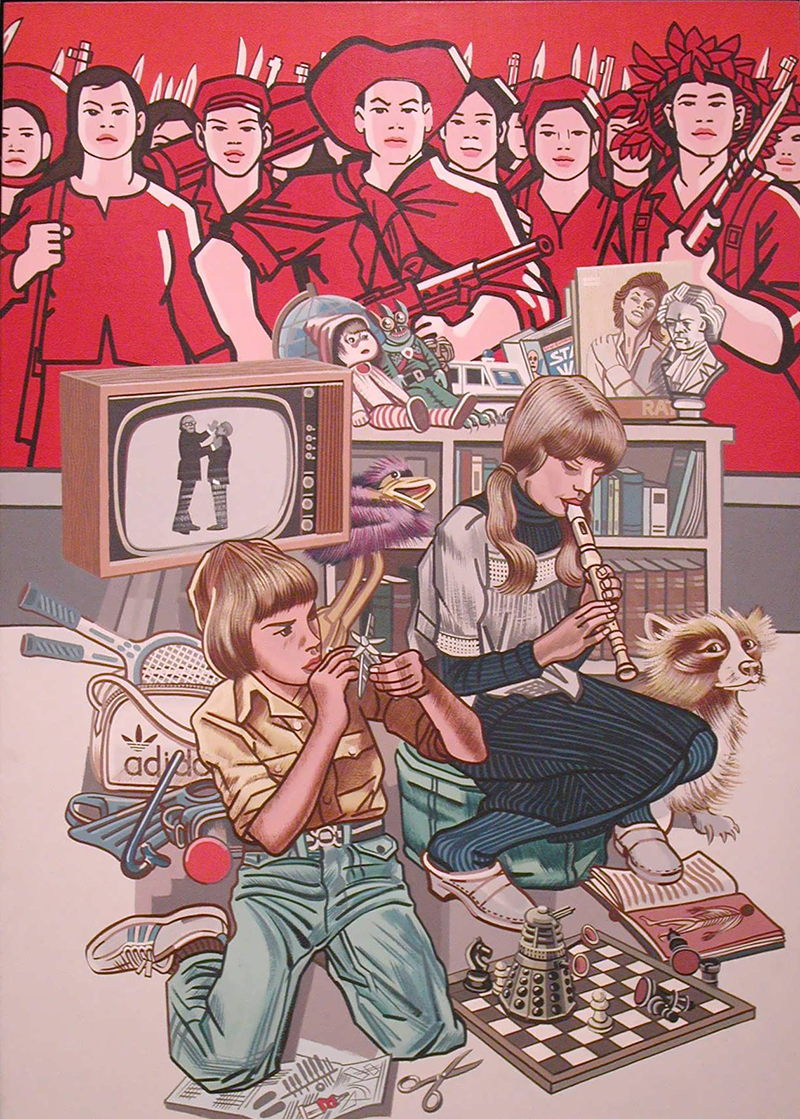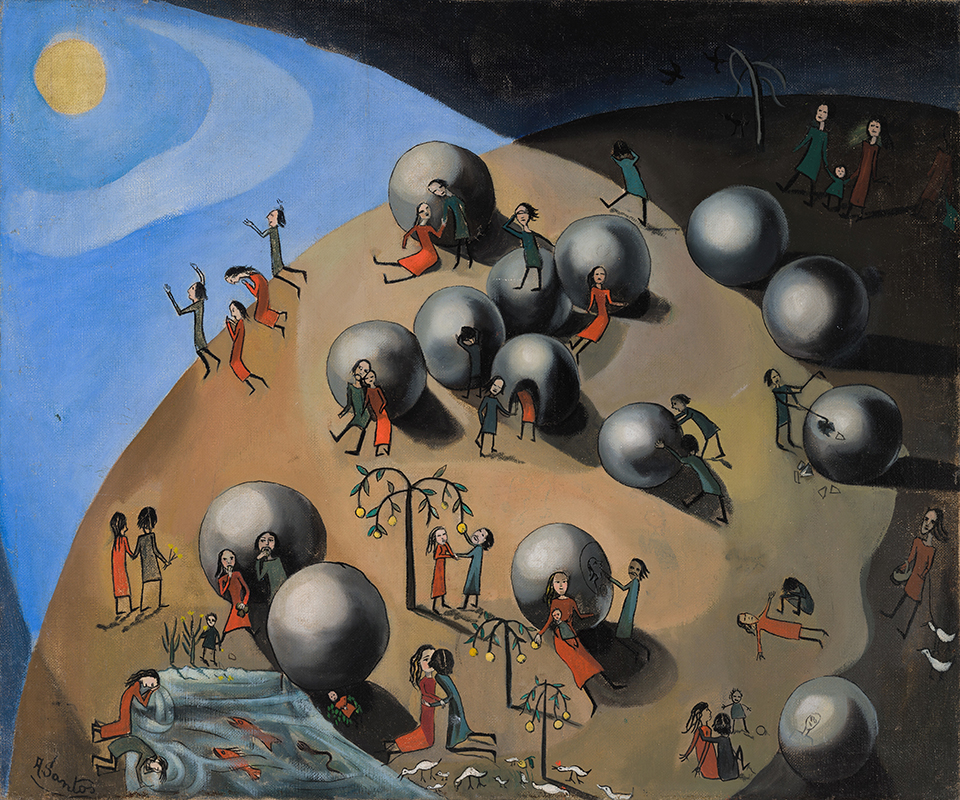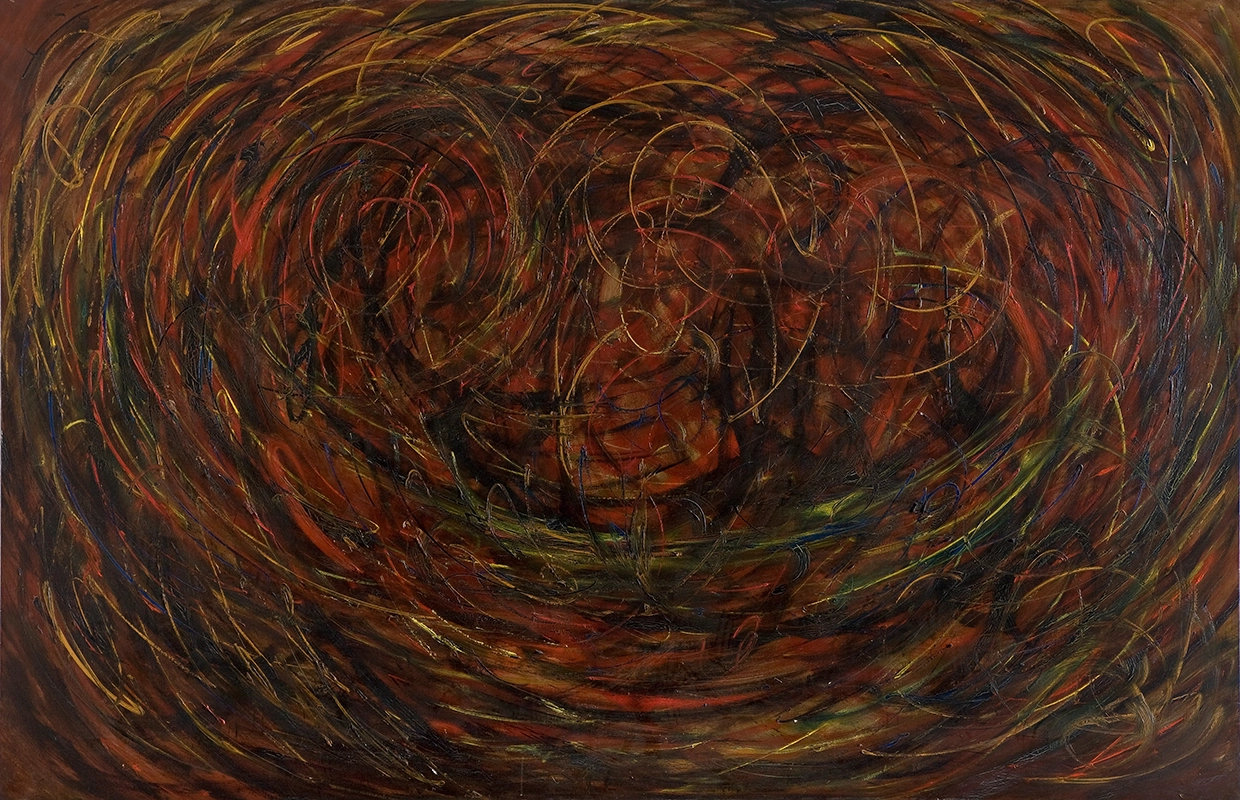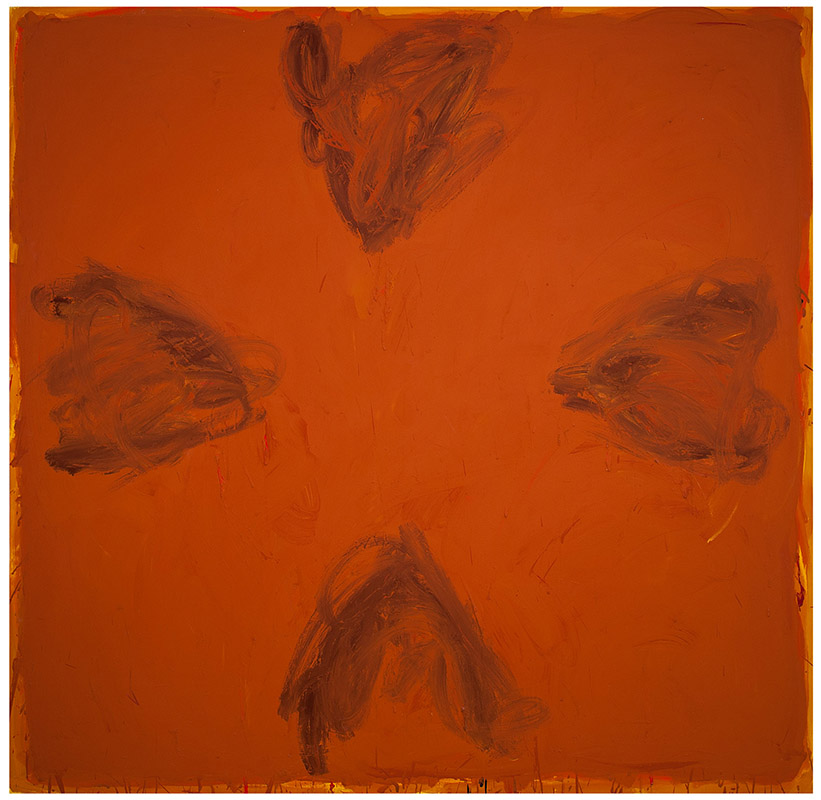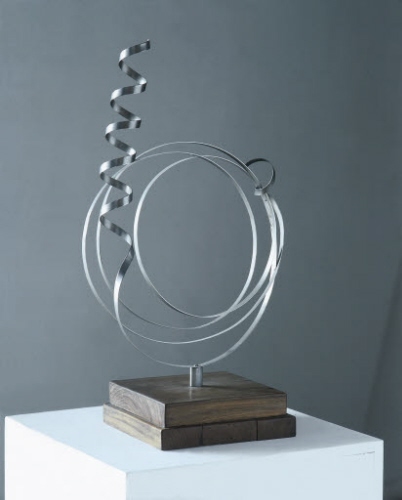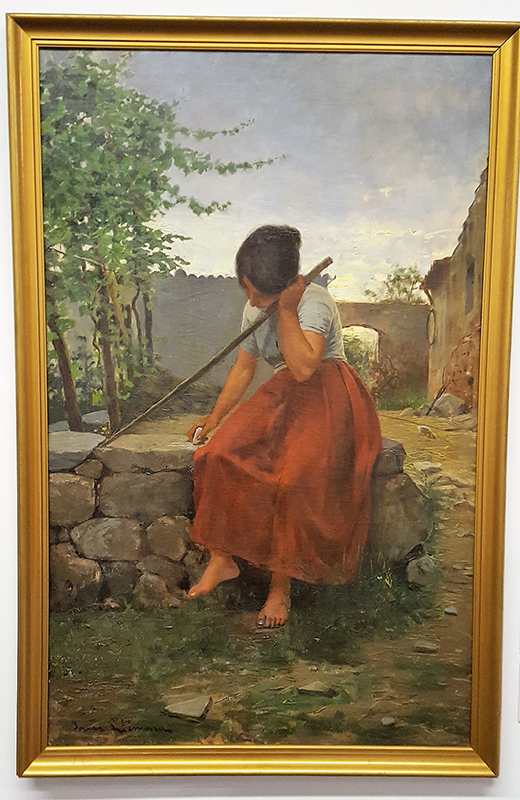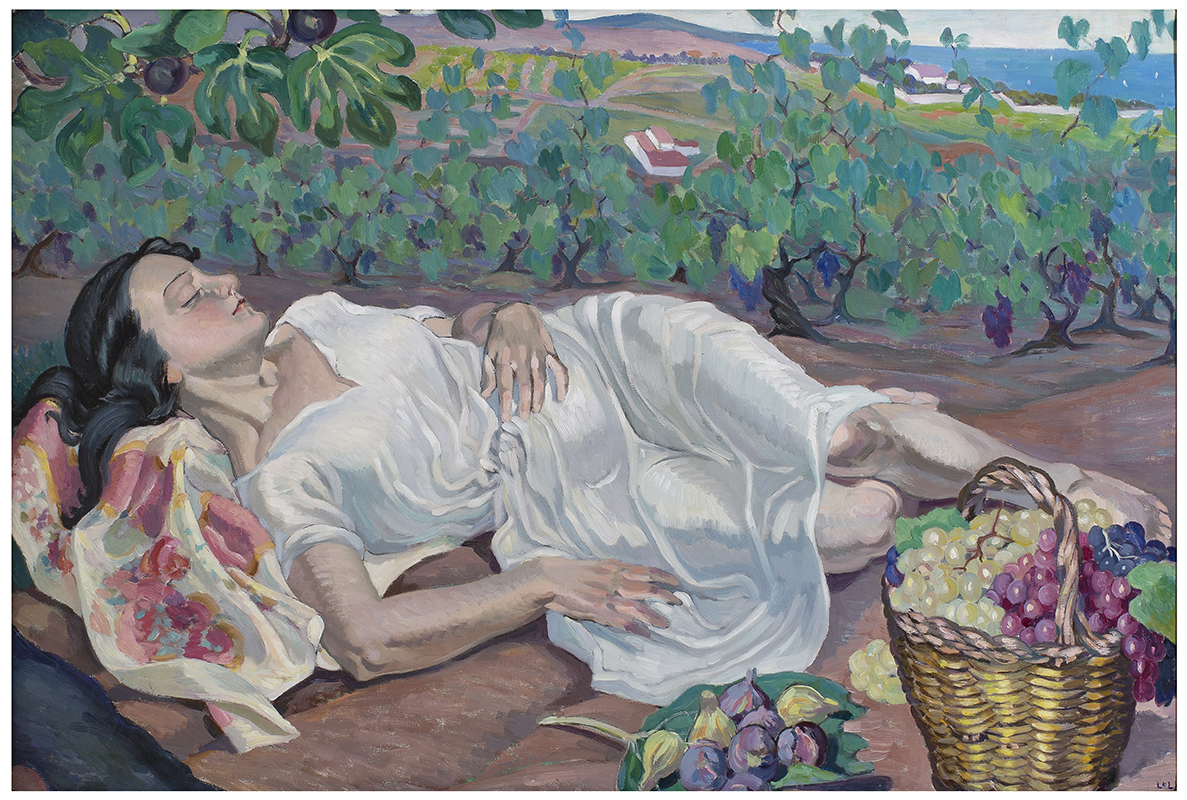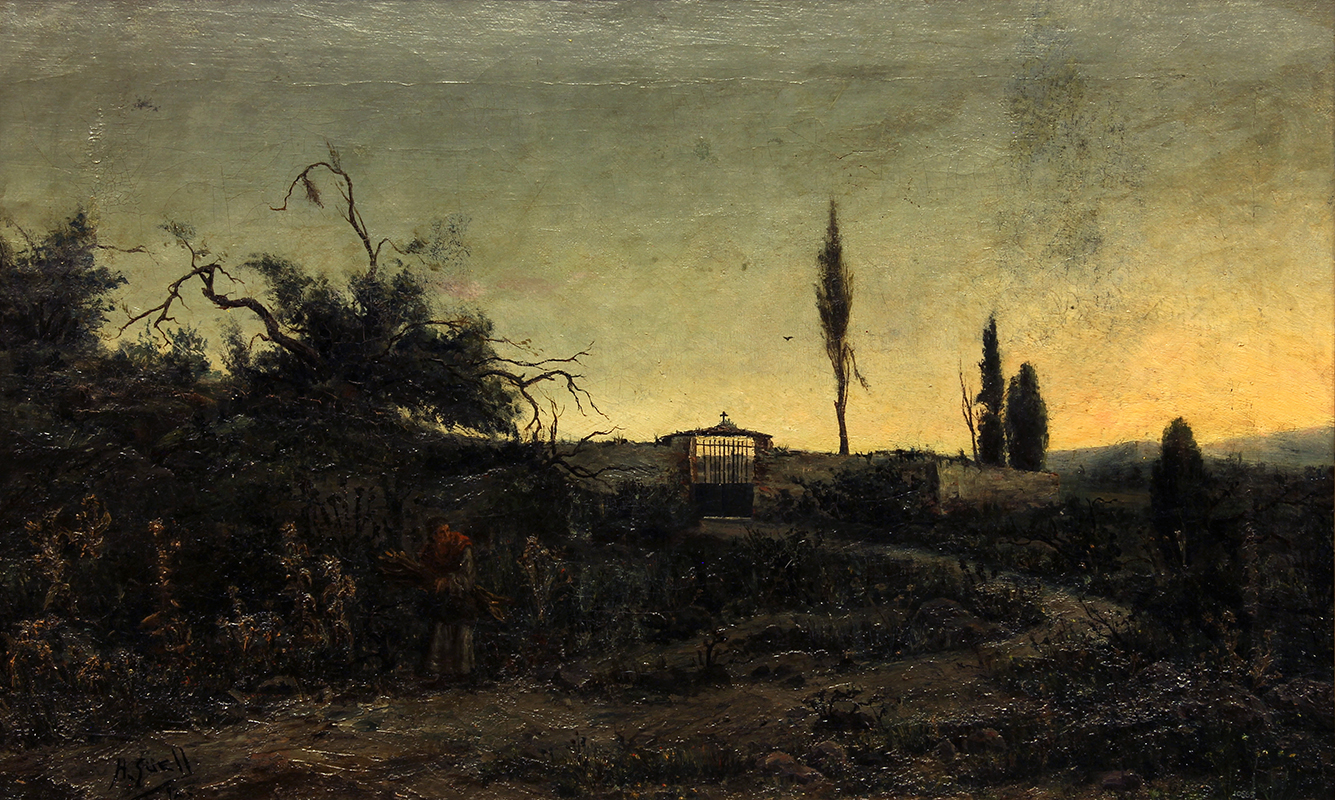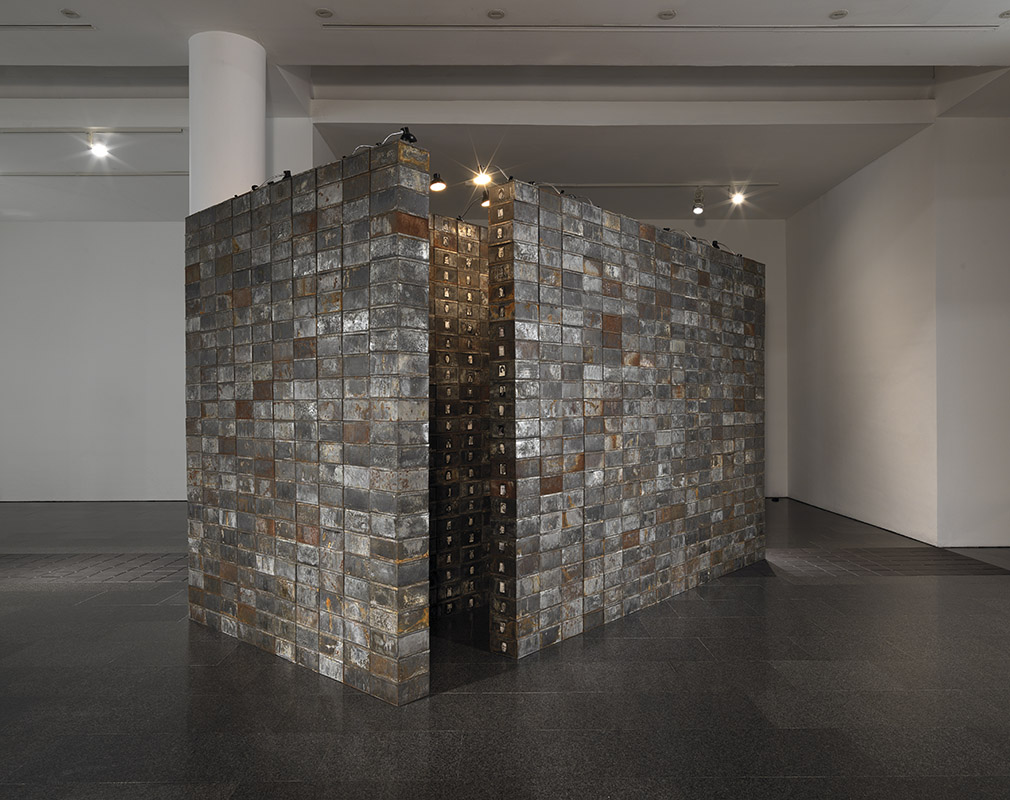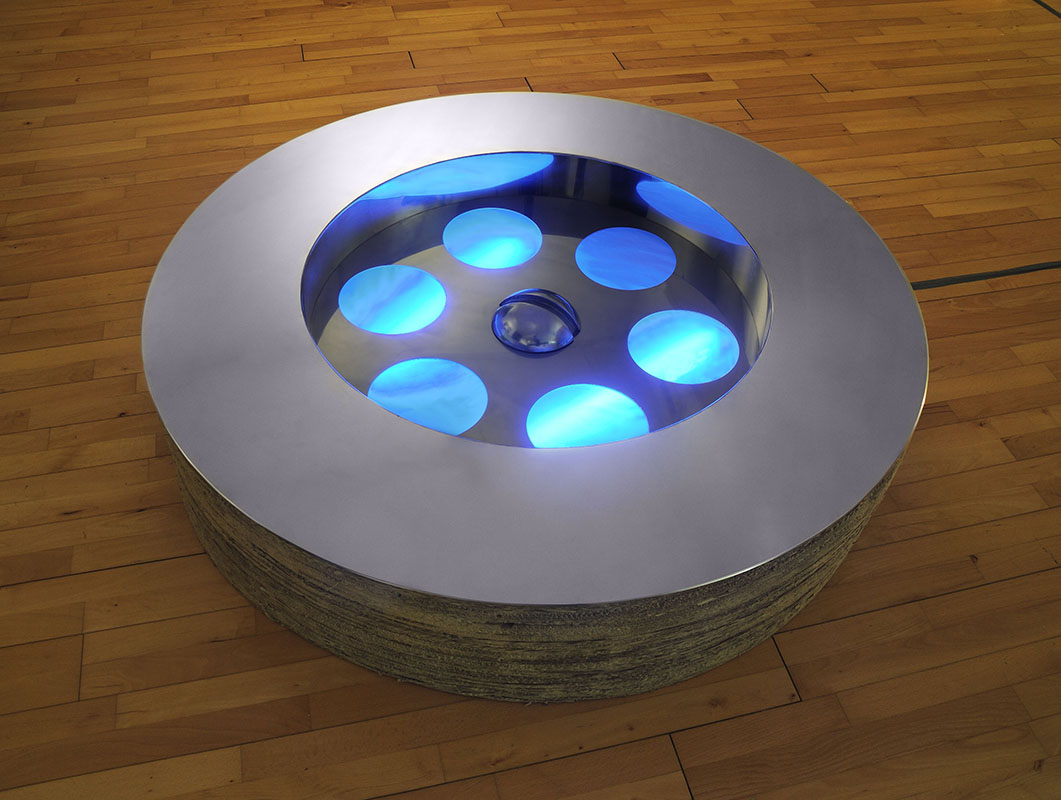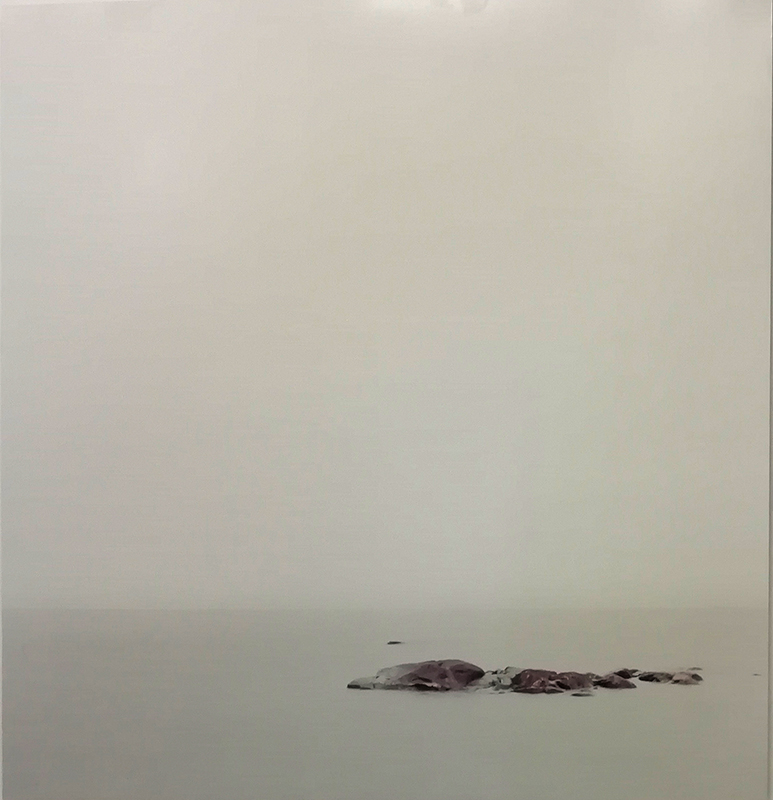Virtual exhibition for XMAC
(Art Museums Network of Catalonia)
Curator: Montse Frisach
Celestial Music Versus Apocalyptic Music
If we were to believe the iconography of thousands of mediaeval works with their musician angels, Christian heaven is the music lovers’ paradise. So, if you love music you had better behave in this life because apparently, Christian heaven is where the most exalted sounds can be found. The huge jam sessions among resident angels and the souls of the greatest musicians of human history must be legendary. For mediaeval artists, major divine and human events were announced or threatened by the music of supernatural beings, just in case the music created by humans incited sinful acts. Thus, when music touches our soul, we still define it as “heavenly music”. It seems that at the most complicated and bloody moments, such as the Last Judgement or the Passion, music can also be heard, although in this case, it is a soundtrack similar to that of a horror movie.
Virgin of the ‘consellers’
In this piece by Lluís Dalmau, a commission to decorate the chapel of Barcelona’s City Hall, the singing angels, similar to those painted by Van Eyck, give solemnity to the glorious meeting of the city’s councillors, presided over by the Virgin and with the presence of Saint Eulalia and Saint Andrew. The angels hold sheet music that has a fragment of the Song of Songs. On the elaborate wooden throne, on which the Virgin sits, there are two ape musicians, one playing the bagpipes and the other a flute, although their music is not nearly as celestial as that of the angels.
Musician Angels
Room 9 in the Girona Art Museum houses panels and fragments of what was once the large altarpiece of Sant Feliu that occupied the apse of the church of Sant Feliu in Girona. It took sixteen years to complete this great piece, which stood in the church until the Spanish Civil War. The authors were artists Perris de Fontaines and Joan de Borgonya and sculptors Pere Robredo and Joan Dartrica. Robredo, born in Burgos, undertook to complete the wooden ornaments for the altarpiece, including these musician angels who appear to observe the museum visitor, sitting above a blessed couple praying. Heavenly music accompanies their prayers.
Virgin of the Angels
On the central panel of an altarpiece for one of the chapels in Tortosa Cathedral, Pere Serra painted an entire orchestra of musician angels, celebrating the sweet motherhood of one of the most beautiful Virgins of the Catalan Gothic. It is not only a devotional image. Pere Serra also appears greatly interested in documenting part of the musical instruments of his day: lute, harp, vihuela, flute, psaltery, portative organ. Only the percussion instruments are needed to complete this exquisite orchestra.
Jesus on the Road to Calvary
The tanners’ guild – a profession dedicated to treating animal skins – was one of the wealthiest in Gothic Barcelona. Jaume Huguet, the most famous artist of the time, was commissioned by these artisans to create a grand and ambitious altarpiece for the church of Sant Agustí Vell, with chapters about the life of the saint and also of Jesus. Eight panels of the altarpiece remain, seven at the MNAC and this one at the Museu Marès, of the scene of Jesus on the road to Calvary, which is a sort of psychological study of the people shown. In this dramatic parade, there is no shortage of music. A musician with a wind instrument leads the procession, with notes that mask the wailing of those accompanying the condemned man.
Decapitation of Saint John The Baptist
The head of John the Baptist is still warm. The executioner’s face still bears the signs of the strain of the execution, but Princess Salome has already picked up the bloody head and is parading it around on a golden platter. It was a public execution. A group of women watch from the windows of one of the buildings, others accompany the princess, although they appear ill at ease. And yet, Pere Garcia de Benavarri, on this panel of the altarpiece, spread around the world from the old church of Sant Joan in Lleida, adds music to the gory scene of the unjust assassination of an innocent man.
Section of an Altarpiece with The Virgin and The Child and Musician Angels
Another great musical moment in the Catalan Gothic is this section of an altarpiece by Jaume Cabrera, who once again uses the Virgin and Child as the central theme. The angels have also come down to Earth to praise the Virgin and the baby Jesus. The angelical chamber orchestra, with the musicians displaying splendid wings, show their instruments: harp, recorder, vielle and lute. The goldfinch the child is holding on a string, flies above the scene as if dancing to the rhythm of the heavenly melody.
Play and Dance. Musicians, Dancers and Muses
Plastic artists have always been friends of musicians and dancers, they have portrayed them and represented the magic of concerts and the dancers’ movements in the air. Just as if the music or dance could be trapped in a piece of canvas, stone or marble. Thanks to them we have seen the faces of anonymous street musicians and musicians with no name. All this, without ever failing to invoke the muses and saints.
Muse of music (Terpsichore)
In the Greco-Roman world, muses are the connection between humans and the arts. They are a type of angel from the ancient world. Despite the title of this small sculpture, Terpsichore is the muse of the dance and of choral song. Forever accompanied by a harp, Terpsichore, with her disentangled attitude and body language, tells us that dance and music liberates. This is the model of the large sculpture by Venanci Vallmitjana that can be found on the first landing of the main stairs in the lobby of the Gran Teatre del Liceu and that, in a way, welcomes the audience before the performance.
Saint Cecilia
Cecilia of Rome is the Christian muse of music. Artists have always represented this martyr, who came from a noble family, richly attired and forever accompanied by a musical instrument. According to various legends about the patron saint of music, Cecilia had to play an instrument and sing continuously praising God, something which caused one of the longest deaths of a martyr in history. In this delicate painting, created by the hands of the Tiépolo father and son duo, she appears at a piano, holding the sheet music on the stand.
Musician
The universe of Marià Fortuny is full of musicians. They appear in his orientalist work – as if he were documenting the “musicians of the world” from the end of the 19th century – and also in his representations of instrumentalists who he most likely saw and heard in theatres. This magnificent drawing, probably made in Rome, with lines that convey great vitality and internal music, depicts a musician playing a bandurria, with an air somewhere between the styles of Goya and rococo.
Italian Musicians
The artist Josep Juliana Albert (1844-1890?) didn’t enjoy the same fame as Marià Fortuny but, like the artist from Reus, he loved the city of Rome. He trained and lived in the Italian capital, alternating his time in the city with time spent in Barcelona. Every piece of Juliana’s work is impregnated with the landscape and people he found on the streets of the city, like these street musicians: an old man with a guitar and a young girl singing. Her melancholic song, despite not having an audience, seems to echo through the narrow streets of old Rome.
The Flute Player
The sculptor Apel·les Fenosa (1899-1988) had many ties to music and musicians. She painted musicians such as Francis Poulenc and Salvador Bacarisse and also created a series of sculptures of figures playing instruments. One of them is this flute player that was bought by Coco Chanel, first lover and then friend of the sculptor, and always kept by her side at her apartment on Rue Cambon. The piece was passed on to the designer’s butler until the Museu Apel·les Fenosa recovered it. The music that emerges from the sculpture is as delicate as the figure itself.
Nocturnal
“I amused myself putting together notes and songs at the piano, struck by the melancholy of that somnolent hour”, wrote Santiago Rusiñol in his poetic prose Nocturn, included in his book Fulls de la vida, published in 1898. That melancholy moment at the piano is captured perfectly by Ramon Pichot in this drawing, which is one of the illustrations in the book that is now exhibited in exactly the place where it was created, Cau Ferrat in Sitges. In the book, Rusiñol also describes the discomfort of the silence. “My heart, half dormant, would have much preferred the cries of inebriated neighbours and the laughter of children, or the tremors of pianos, rather than the voices of silence and those noises that weren’t there.” The work is also proof of the great friendship between the two Catalan modernist artists.
Enric Granados
This precise drawing of the composer and pianist Enric Granados is also proof of the great friendship between the musician and artist Ismael Smith. The artist drew the author of Goyescas from memory because the musician had died tragically two years earlier when the ship he was sailing in, the Sussex, was torpedoed in the English Channel by a German submarine during the First World War. The sudden and dramatic death of Granados greatly affected Ismael Smith, who, the night before the fatal voyage of the musician and his wife, had had dinner with them in London. Smith is the author of various portraits of Granados and even a mask of the composer.
Rei Zulu
The ill-fated artist Jean-Michel Basquiat (1960-1988) had more than 3000 records in his home when he died. They included a very diverse range of styles: blues, classical, disco… He was a friend of musicians and the boyfriend of the yet-to-be-famous Madonna. With Vincent Gallo, he formed the group Gray, which used the electric guitar in an extremely experimental way, and was a DJ. Blue is a colour evoked by jazz music. Perhaps this is why Basquiat chose it for this painting to pay tribute to three American jazz trumpeters: Bix Beiderbecke, Bunk Johnson and Howard McGhee. The canvas also shows a black-painted face inspired by Louis Armstrong, characterised as the King of the Zulus at the New Orleans Mardi Gras Parade in 1949.
Loïe Fuller
Dancer Loïe Fuller was a pioneer of “music for the eyes” through the movements of her body, free of corsets and covered with swathes of cloth and material. The American created the Serpentine Dance, depicted and idealised in this sculpture by Eusebi Arnau, one of the sculptors who worked extensively for Catalan modernist architects. The visual aspect of Fuller’s dance was powerful and used new technologies, including coloured lighting effects. It is not known whether Arnau made this piece before or after seeing the dancer, who performed at the Teatre Novetats in Barcelona in 1901. Fuller was a mentor to other pioneers of modern dance including Isadora Duncan and she also inspired Tórtola Valencia in the use of light and colour.
Tórtola Valencia and The Crow
Carmen Tórtola Valencia (1882-1955) from Seville was another artist who revolutionised dance in the 20th century. Famous for her role as the model for Myrurgia perfumes, on an artistic level, her contribution was crucial. She was a friend of intellectuals and artists, an art collector and a free woman in her personal life. Rafael Sala (1891-1927) from Vilanova was a great admirer of hers and his friends arranged for Tórtola to perform at the Apolo Theatre in Vilanova, a venue that wasn’t typically included on the artist’s international tours. She was supposed to perform on 9th and 10th October 1915 but did so only on the first day as she felt “indisposed” following a rather unfriendly reception from the public. In his writing about the dancer, Sala linked the dance of the artist with tragic Spain. Several years after the performance, the same year as his premature death, Sala painted her this way, in a style that was a prelude to Art Deco.
The Music of Forms
Music in works of visual art is not only depicted by the appearance of the music in a natural way or by its performers. The forms, the distribution of diverse elements, the colours, lines and thicknesses, the vibration of the composition, are like the notes, chords and rhythm of a musical piece. The music is on a stave or in the improvisation of a band but also in the movement of the dance in the air. Often, abstract sculptures are like the notes of choreographers; the nervous strokes of a painting like the cadence of jazz and in the parallel worlds imagined by artists an unknown and mysterious internal music is hidden.
Dance at Moulin de la Galette
Like many other artists in Paris, Ramon Casas painted the interior of the Moulin de la Galette. However, on this canvas, unlike most other artists, he didn’t choose the liveliest hour, at night, but captured the establishment’s atmosphere in the middle of the afternoon or early evening, with few customers. It is a work steeped in melancholy and Casas captures the solitude of the characters. The particular structure of the scene, from the side and a raised perspective; the musicians in the shadows and the customers dancing alone create a strange distant tone, on a sad, grey afternoon.
American Interior, Num. 10
An afternoon after school on a normal day, in the home of a middle-class American family. The children are in their bedroom, the boy is playing and the girl is practising the flute for her music lesson. In the background, music from the television. But, the peasants of the Viet Cong threaten this family scene… Icelandic artist Erró, one of the representatives of European pop art, denounces the comfortable western lifestyle in his series American Interiors. Erró’s colourful and vital compositions have a discordant quality.
Earth
There are no musical instruments in this small parallel world created by Ángeles Santos during her short but dazzling surrealist period; however, it does contain latent music. Like a Romanesque panel, the figures – a couple and sometimes their child, at different ages – are shown in different scenes carrying out a relatively simple and natural life. They live inside a sphere because the spheres are the landscape of this planet, which is so small you can hear the music of the universe very clearly. Earth is a love ballad, repeated until infinity.
Cosmic Abstraction
Like Àngeles Santos, Evarist Vallès (1923-1999), a great friend of Dalí’s, cultural activist and ex-director of the Museu de l’Empordà, also brings us the music of the universe with this abstract of synaesthetic hues. The circular, spiralling gesture created by the green, yellow, red and black strokes is like a never-ending melody. Vallès, with artwork that lies somewhere between surrealism and metaphysical abstraction, belongs to a generation of post-Spanish Civil War Catalan artists that has remained semi-hidden in the canon of Catalan art.
Flat Fleet
In the 1980s Joaquim Chancho (Riudoms, 1943) listened to a lot of jazz music, which is why many of the titles of his works come from compositions by musicians such as Thelonious Monk, John Coltrane and Miles Davis. Flat Fleet is titled after a track by Italian jazz trumpeter Enrico Rava. Jazz and abstract painting, born around the same time, have always matched wonderfully because both share rhythms filled with syncopes and patterned improvisations. Chancho paints a deep red surface that moves between spontaneity and order, between the cross-shaped geometry that emerges from the four spots and the apparently monochrome and flat background. The size of the work on a human scale and the vibration caused by the superposition of pictorial layers give to this painting an organic quality that jazz music also possesses
From the Air into The Air
This sculpture is a crucial turning point in the work of Leandre Cristòfol, one of the most brilliant sculptors of the Catalan Avant-Garde. Made using industrial materials – springs and watch straps –, this is the first non-figurative work and was shown by Cristòfol in Lleida. It is also the first piece of an exploratory stage that broke with traditional forms. The spirals and concentric circles are not far removed from the forms of Loïe Fuller’s free dance
Silence is Music
John Cage confirmed with his 4’ 33’ that it is impossible to compose a completely silent piece of music. Whilst the piece is being interpreted it is extremely difficult to prevent any sound, however minimal, from being incorporated, despite trying. Similarly, it is not true that Malevich creates nothing with paintings like White on White or Black Square. Silence is a utopia. Music without silence, however, cannot exist. “Some think that death is what gives meaning to life. By the same token, silence may be the only thing that gives meaning to sound, hence music”, wrote Mark Tanner, in his book Mindfulness in Music. Jordi Savall once interrupted the opera L’Orfeo at the Liceu because of the noise he could hear being made by the audience, during the seconds of silence in Monteverdi’s composition: “The moments of silence are just as important as the moments full of notes”. Visual works of art also contain very diverse moments of silence and provoke them in us, in a world saturated with noise.
Rainy Afternoon (also called The garden porch)
The rain taps peacefully on the outside of a farmhouse porch. The woman, alone, observes this gray afternoon. The sound of the water transports her to the inner silence. A few years before Ramon Pichot drew him sitting at the piano, in the summer of 1889 Santiago Rusiñol undertook a peculiar adventure with his friend Ramon Casas: a trip by carriage around Catalonia. Among the numerous rural landscapes that the two artists painted during their journey there is this remarkable canvas that Rusiñol himself gave as a gift to the Biblioteca-Museu Víctor Balaguer.
Pensative
The women painted by Joan Llimona (1860-1926) tend to be alone, with a contemplative attitude, reading or simply, in a rural scene, like this young girl drawing on a stone with chalk guided by who knows what thoughts. Is she overcome by melancholy, sadness or worry? It doesn’t matter. It is a moment of solitude and silence that is conveyed to the viewer.
Rest
Nostalgia can also be silent. Known as an illustrator and drawer, in this painting Lola Anglada delves into memories of the grape harvest at her family home in Tiana to portray this autobiographical scene of repose. The girl having a siesta beneath the fig tree is the artist herself but a younger version, the one she remembers, the one she hears, with the noise of the insects and, in the background, the murmurs of the workers in the winery and the grape pickers.
Cemetery in the evening
Hortensi Güell (1876-1899), from Reus, was a versatile artist, writer, critic and painter. At the age of just 23, he committed suicide over a love affair by throwing himself into the sea in Salou. However, he made the most of his short life. He was intellectually brilliant and a friend of Picasso, Torres Garcia and Joaquim Mir, among others. This adolescent painting, with a post-Romantic air, reveals a great artistic maturity. The silence of the evening, near the place where the dead rest, conceals mystery.
Christian Boltanski, The Reserve of the Dead Swiss, 1991. Installation. Metal boxes, silver salt photography, cardboard and electric lamps, 288 x 469 x 238 cm; 2380 boxes 12.1 x 21.8 x 23.3 cm each. MACBA Collection. MACBA Foundation. Museu d’Art Contemporani de Barcelona © Christian Boltanski, VEGAP, Barcelona
The Reserve of the Dead Swiss
This metal bunker is one of the quietest installations of contemporary art. Just the light from the lamps that give off a post-war glow captivate. The installation emits silence and all we can do is keep quiet and make as little noise as possible. Don’t pass this artwork by at MACBA, enter the narrow passageway and look at the photographs of the anonymous people who are possibly no longer remembered by anyone. Boltanski remarked, “I often compile lists of names because I have the impression that saying or writing a person’s name brings them to life for a few moments. If someone mentions them, their individual existence is recognised”.
Daily Silence
“Every day something is lost down the drain in the shower”, says Ester Ferrando (Reus, 1972). And it is in the shower, drenched by the noise and feel of the water, where many find that moment of interior silence and reflection. The artist has enlarged this everyday object, the bath or shower drain, which we usually ignore apart from when we clean it and has distinguished it and given it an appearance of noble sculpture, that invites meditation.
Islands (II)
The photographic landscapes of Montserrat Soto, recent winner of the National Photography Award, are usually extremely anthropological but, in contrast, also tell of emptiness and loneliness. Normally, when we imagine a desert island, we imagine a place with palm trees, white sand and a turquoise blue sea. A fantasy. In contrast, Soto photographed a real desert island, on the Åland archipelago in Finland, a scene where the white of the sea and the sky merge, in a silence that makes us imagine that we may have reached the end of the world.



